Absence of Wires
Warning: Undefined variable $output in /home/darmy/apps/darmy_main/wp-content/themes/sink_darmy/includes/slideshow_functions.php on line 94
 There is no life without wires; we simply disallow what we know is there, in order to fabricate what we want to be there. And what we want is a world in which information appears before us free of any material implications. Making cell towers perform otherwise—as anything but cell towers—is a key design in the appeal for more and new modes of immateriality.
There is no life without wires; we simply disallow what we know is there, in order to fabricate what we want to be there. And what we want is a world in which information appears before us free of any material implications. Making cell towers perform otherwise—as anything but cell towers—is a key design in the appeal for more and new modes of immateriality.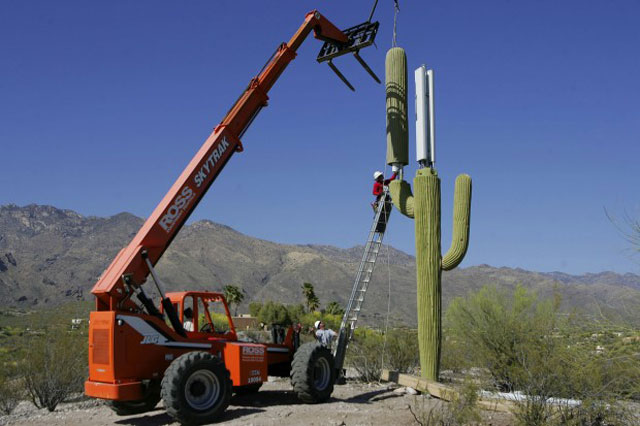 Wires are always somewhere, retracted into walls, inscribed onto motherboards, shielded behind fronds. Our transcendental online experience is constantly interrupted. We are tethered to outlets; laptops tethered to projectors. One device bound to another; two sticks lashed together. Wires twist into space, entangled like the viscera of technology slain.
Wires are always somewhere, retracted into walls, inscribed onto motherboards, shielded behind fronds. Our transcendental online experience is constantly interrupted. We are tethered to outlets; laptops tethered to projectors. One device bound to another; two sticks lashed together. Wires twist into space, entangled like the viscera of technology slain.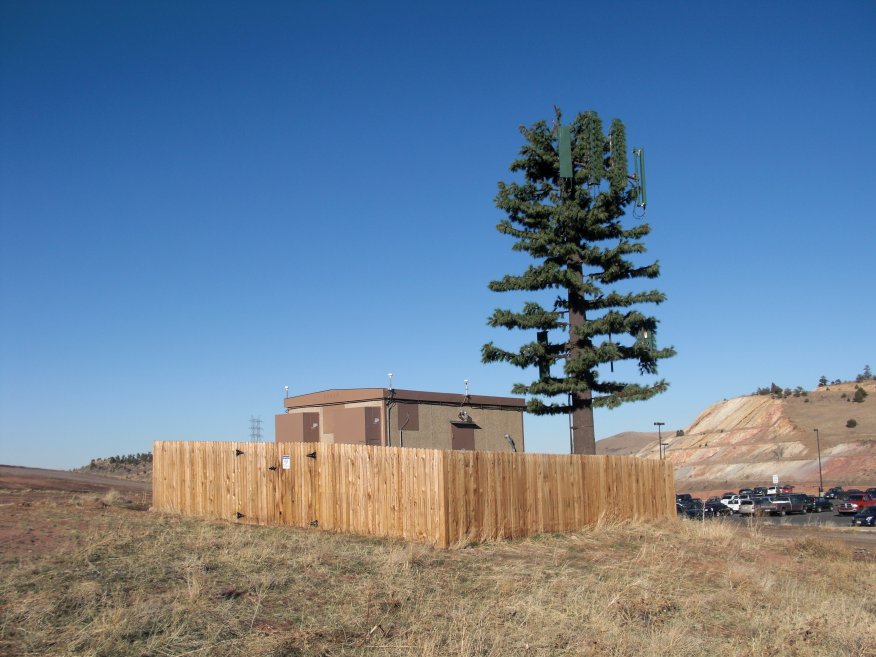 The mono-pine in this sense brackets out the physical requirements of connection. Rationally we know the towers and the wires are somewhere, yet if we can excise them enough from our visual world, they appear excised from the world altogether. This is the meaning of wirelessness, not to go without wires, but to put wires aside, to make an austere zone where only the results of computing, not its processes, are present.
The mono-pine in this sense brackets out the physical requirements of connection. Rationally we know the towers and the wires are somewhere, yet if we can excise them enough from our visual world, they appear excised from the world altogether. This is the meaning of wirelessness, not to go without wires, but to put wires aside, to make an austere zone where only the results of computing, not its processes, are present. Information makes a certain kind of objective sense the more it appears to originate from the ether, or better yet, when it appears as the ether itself, independent of any delivery system. The fact is more a fact the less it needs to convey itself, the more it simply occurs as phenomenon. But information is not ether, independent of a substrate. There is always a delivery system, a thing between the network and the device. It exists behind the lacquered leaves of a tree that never seeds.
Information makes a certain kind of objective sense the more it appears to originate from the ether, or better yet, when it appears as the ether itself, independent of any delivery system. The fact is more a fact the less it needs to convey itself, the more it simply occurs as phenomenon. But information is not ether, independent of a substrate. There is always a delivery system, a thing between the network and the device. It exists behind the lacquered leaves of a tree that never seeds.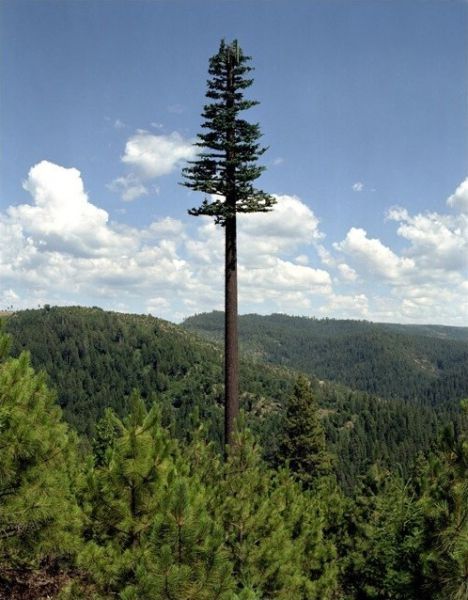 The mono-pine may stave off visual pollution, but only at a glance. Any kind of gaze and the uniformity and regularity of the manmade betray any tree-ness. In fact, we may see a mono-pine and know it is not a tree, but still not know what it is exactly. We both see and refuse to see that which makes the illusion of life without wires imaginable. What is the advantage of fictioning such a world, beyond the facile ideology of the portable and the mobile?
The mono-pine may stave off visual pollution, but only at a glance. Any kind of gaze and the uniformity and regularity of the manmade betray any tree-ness. In fact, we may see a mono-pine and know it is not a tree, but still not know what it is exactly. We both see and refuse to see that which makes the illusion of life without wires imaginable. What is the advantage of fictioning such a world, beyond the facile ideology of the portable and the mobile? Disguise is not concerned with invisibility, but rather visibility along a new axis. As such, disguise only functions in the open. Passing as something else is not the objective so much as avoiding recognition. To be disguised is to be nothing in particular, to be anonymously visible. If we have embraced the digital’s on screen presence, submitting its visual quirks and glitchy artifacts to various forms of aestheticized and fetishized nostalgia, the digital’s presence in the terrestrial landscape is another matter.
Disguise is not concerned with invisibility, but rather visibility along a new axis. As such, disguise only functions in the open. Passing as something else is not the objective so much as avoiding recognition. To be disguised is to be nothing in particular, to be anonymously visible. If we have embraced the digital’s on screen presence, submitting its visual quirks and glitchy artifacts to various forms of aestheticized and fetishized nostalgia, the digital’s presence in the terrestrial landscape is another matter. Perhaps these constructions mark the desire for a different return, to a time before monopoles stippled the landscape, to the pre-cellular. This would make sense if monopoles did not fit so neatly within the range of preexisting antennas and posts that already signify our condition as a society of towers. In other words, monopoles are not exactly a stain upon an otherwise utopic ecology—far from it. Yet, of all the poles within our visual realm, it is the cell tower that we actively conceal.
Perhaps these constructions mark the desire for a different return, to a time before monopoles stippled the landscape, to the pre-cellular. This would make sense if monopoles did not fit so neatly within the range of preexisting antennas and posts that already signify our condition as a society of towers. In other words, monopoles are not exactly a stain upon an otherwise utopic ecology—far from it. Yet, of all the poles within our visual realm, it is the cell tower that we actively conceal.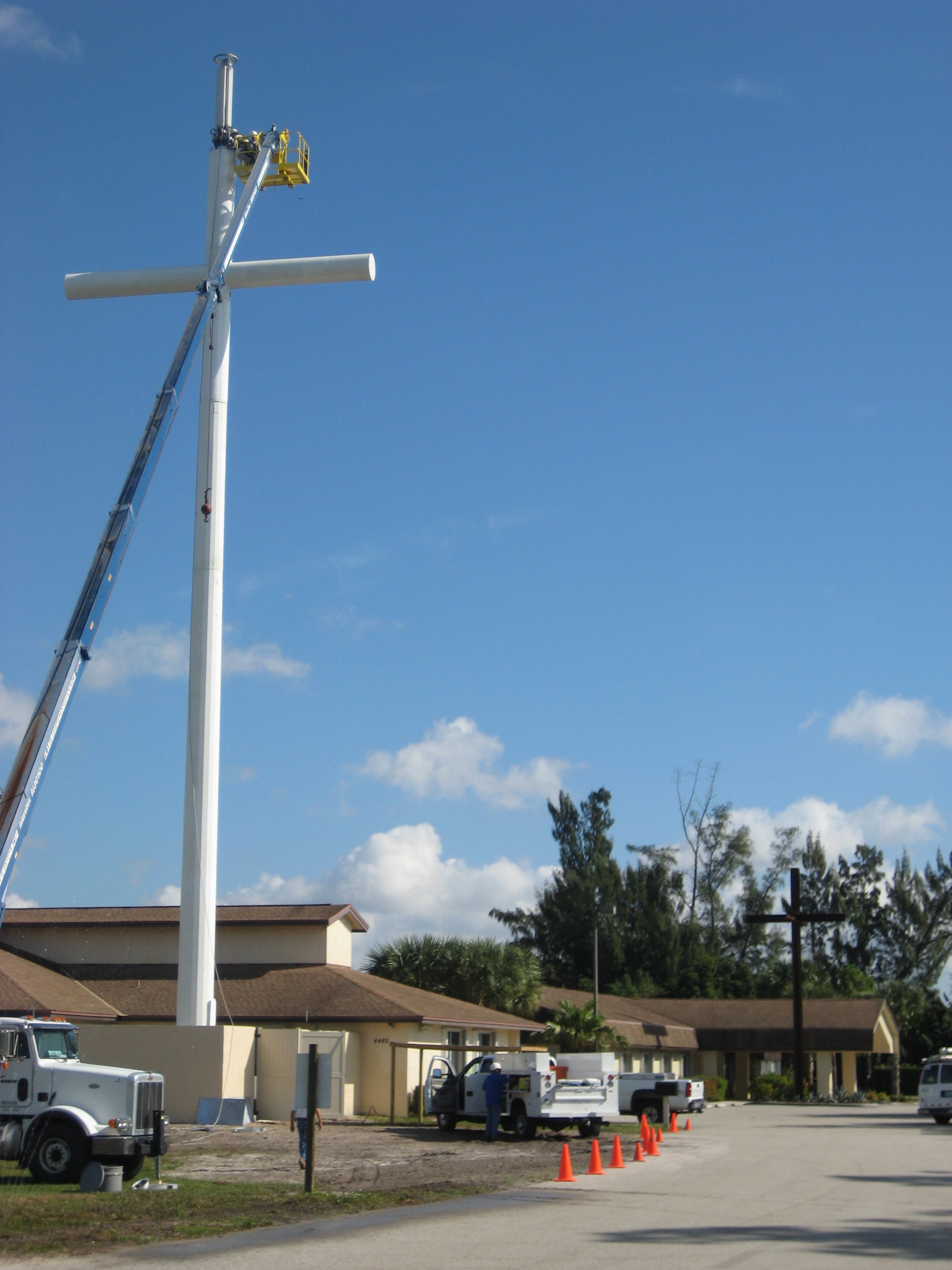 We live—maybe only tolerantly—with all kinds of poles. Why conceal some and not others? This is a particularly pointed question considering that cell towers are also made in the form of flagpoles, streetlights, steeples, and utility posts. A return to nature as a harmonious system undisturbed by human intervention is clearly not the concern.
We live—maybe only tolerantly—with all kinds of poles. Why conceal some and not others? This is a particularly pointed question considering that cell towers are also made in the form of flagpoles, streetlights, steeples, and utility posts. A return to nature as a harmonious system undisturbed by human intervention is clearly not the concern.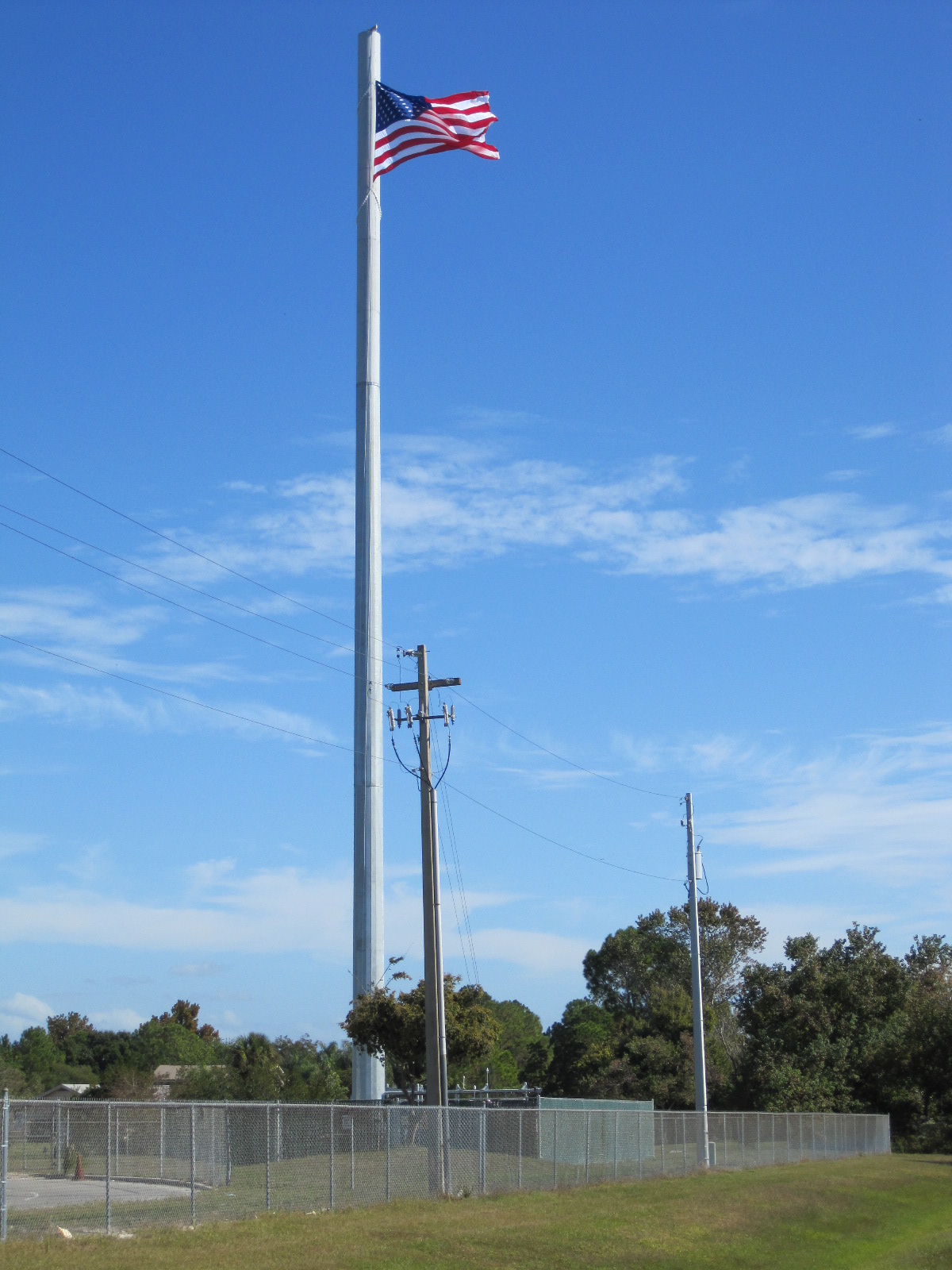 “Your vision in disguised cell towers is our mission,” the Larson Camouflage website declares.
“Your vision in disguised cell towers is our mission,” the Larson Camouflage website declares. Larson Camouflage built the first mono-pine in 1992, a bastardization begat from the union of a spruce and a monopole. As far as infrastructure goes monopoles are no more visually offensive than other similar structures. Long and lean, they tower above the clutter of electronic echoes, generally ending in a neat bundle of boxy antennas and receivers that carry various network signals.
Larson Camouflage built the first mono-pine in 1992, a bastardization begat from the union of a spruce and a monopole. As far as infrastructure goes monopoles are no more visually offensive than other similar structures. Long and lean, they tower above the clutter of electronic echoes, generally ending in a neat bundle of boxy antennas and receivers that carry various network signals. There are companies that fabricate trees on demand; impostures made of epoxy, paint, and an anonymous artisan’s touch. These memorials to artifice, not entirely hidden, but not celebrated either, populate our landscape. They are instruments of the wireless, or they would be if the wireless were more than an elusive fantasy, a phantom always promising to appear around some future corner.
There are companies that fabricate trees on demand; impostures made of epoxy, paint, and an anonymous artisan’s touch. These memorials to artifice, not entirely hidden, but not celebrated either, populate our landscape. They are instruments of the wireless, or they would be if the wireless were more than an elusive fantasy, a phantom always promising to appear around some future corner. Existing in the Absence of Wires
Existing in the Absence of Wires



Dilettante Mail
Get updates from us a few times a year.